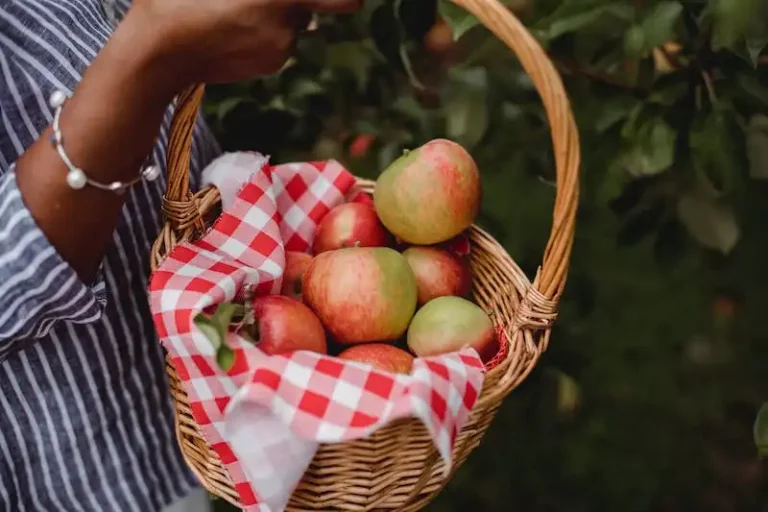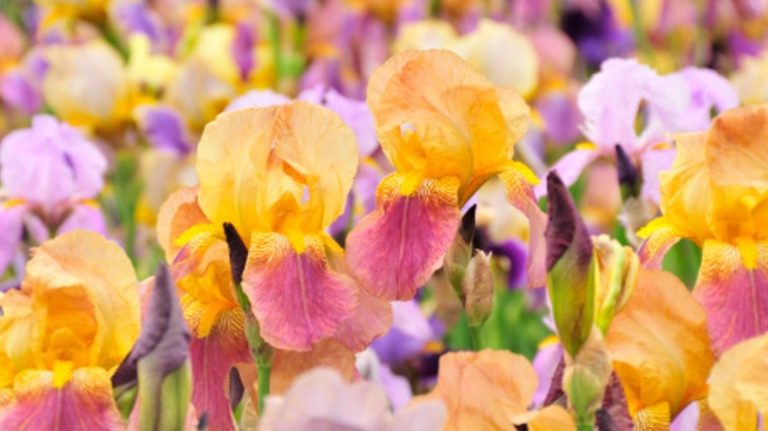The strawflower, also known as the helichrysum, is a stunning annual plant that will add a pop of color to your garden. This unique flower comes in a wide range of colors, including pink, white, yellow, and purple, making it a versatile choice for any garden. Its straw-like petals stay open all day, even in the morning, and do not wither like other flowers.
Strawflowers grow well in full sun and prefer a drier soil, making them an ideal choice for those living in warmer climates or areas with less frequent rainfall. They are also disease resistant, so you don’t have to worry about them succumbing to common garden pests. Once established, they require minimal maintenance and are known for their ability to thrive in a wide range of temperatures.
When it comes to care, strawflowers are fairly low-maintenance. They should be watered regularly, about once a week, but be careful not to overwater, as this can lead to root rot. Pruning is also recommended to keep the plants looking neat and to promote more blooms. You can sow the seeds indoors in early spring to get a head start on the growing season, or you can directly sow them in late spring or early summer, where they will sprout and bloom in a matter of weeks.
One of the benefits of growing strawflowers is their ability to attract beneficial insects, such as bees and butterflies, making them a great companion plant for your garden. They also make excellent cut flowers for bouquets or dried flower arrangements, as they retain their vibrant colors even when dried. With their striking blooms and easy maintenance, strawflowers are a perfect addition to any cottage or personal garden.
Tom, a passionate gardener, remarks, “Strawflowers have become one of my favorite annuals to grow. Their bright, colorful blossoms bring so much life to my garden, and I love that they require very little care. They’re also great for privacy, as they can grow quite tall and create a natural barrier.”
In conclusion, the strawflower is a beautiful and versatile plant that will add a touch of elegance and color to your garden. Whether you’re looking to spruce up your flower beds or create a stunning floral arrangement, the strawflower should definitely be on your list of must-have plants. So why wait? Start planting your own collection of strawflowers today and enjoy their beauty all season long.
Source: [источник]
Collection Strawflower Seeds
Bright and long-lasting, strawflowers are a favorite among gardeners. These beautiful bloomers are easy to grow and add a pop of color to any garden. Whether you are a seasoned gardener or just starting out, planting strawflowers is a great choice.
Strawflowers, also known as paper daisies, belong to the daisy family. They come in several colors, including red, pink, purple, yellow, and white. They thrive in bright light and well-drained soil. These plants are usually grown as annuals, but they can be grown as herbaceous perennials in warmer zones.
If you are considering adding strawflowers to your garden, there are a few things you should know. First, they are drought-tolerant and do not require much water once established. Second, strawflowers are relatively disease and pest-free, making them a low-maintenance plant. Third, they require a light fertilizer application every 20 days to keep them looking their best.
When it comes to choosing strawflower seeds, there are a few options available. One popular variety is the dwarf ‘Dreamtime’ strawflower, which grows to about 20 inches tall. Another popular choice is the spruce strawflower, which has narrow foliage and bright blossoms.
Planting strawflower seeds is a straightforward process. Simply order the seeds online or purchase them from a local nursery. If you are starting seeds indoors, sow them 6-8 weeks before the last frost date. If you are planting them directly outdoors, wait until the danger of frost has passed. Plant the seeds about 1/4 inch deep and keep the soil moist until the plants germinate.
Once the strawflowers are established, they require minimal care. Deadheading regularly will promote more blooms, and mounded plants may require staking to prevent them from flopping over. In late winter, cut back the foliage to encourage new growth in the spring.
In conclusion, strawflowers are a good choice for any garden. They are low-maintenance, pest-free, and provide a splash of color. Whether you are a beginner or an experienced gardener, these bright and beautiful flowers are sure to thrive in your garden. So why not give them a try?
Growing strawflower seeds in your garden
If you are considering growing strawflower seeds in your garden, it’s a great choice. Strawflower, also known as everlasting flower, is a beautiful herbaceous plant from the same family as ageratum and evolvulus. It is well-loved for its mounded growth habit and its wide variety of bright and full blooms.
When it comes to growing strawflower seeds, there are a few important factors to keep in mind. First, strawflowers grow best in zones 8 to 11, so if you live in a colder climate, it’s best to sow the seeds indoors and transplant the seedlings outdoors once the threat of frost has passed. Strawflower seeds should be sown in a well-draining soil mix and kept consistently moist until the seedlings emerge.
Strawflower seeds require plenty of light to germinate, so it’s important to provide them with bright, direct light once they come up. You can also use a grow light to supplement natural sunlight. Once the seedlings are established, they should be watered regularly, allowing the top inch of soil to dry out between waterings. Avoid overwatering, as strawflowers are susceptible to root rot.
In terms of pests and diseases, strawflowers are relatively problem-free. However, it’s always a good idea to keep an eye out for common garden pests like aphids and whiteflies. If you notice any signs of infestation, you can order beneficial insects or use organic pest control methods to address the issue.
When it comes to pruning strawflowers, it’s generally best to let the plants grow naturally. However, if you notice any dead or diseased foliage, it should be removed to maintain the plant’s health and appearance. Regularly removing faded flowers can also encourage the plant to produce more blooms.
Strawflower plants are known for their long blooming season, which can extend from late spring to winter. The flowers themselves are drought-tolerant and can withstand high humidity, making them a great choice for hot and dry climates. If you live in a particularly hot area, you may want to provide some shade for the plants during the hottest part of the day.
In terms of propagating strawflowers, you can collect seeds from established plants at the end of the growing season. Simply allow the flowers to dry on the plant, and then collect the seeds for future sowing. Strawflower seeds have a high germination rate and can be stored for up to 2 years.
To sum up, growing strawflower seeds in your garden is a rewarding and relatively easy process. With proper care and attention, you can enjoy a beautiful collection of strawflowers in a variety of colors and types. Whether you’re a beginner or an experienced gardener, strawflowers are sure to bring beauty to your outdoor space!
Strawflower Seeds – Swiss Giant Mix
Strawflower, also known as everlasting flower, is a member of the daisy family. It is native to Australia and gets its name from its straw-like texture and long-lasting blooms. The Swiss Giant Mix features a stunning variety of colors, including blue, purple, pink, and yellow, making it a striking addition to any garden.
When it comes to planting Strawflower seeds, you can sow them directly in the garden or start them indoors. If you choose to start them indoors, make sure to do so about 6 to 8 weeks before the last frost date in your zone. This will give the seeds enough time to germinate and grow into seedlings.
Strawflower seeds are relatively easy to grow and require minimal maintenance. They prefer full sun and well-drained soil, so make sure to choose a spot in your garden that receives plenty of sunlight. Once they are established, they can thrive in a variety of soil conditions.
Watering Strawflower plants is simple. They only need to be watered once a week, but their water needs may increase during periods of high heat or humidity. It is best to water them at the base to avoid getting the foliage wet, as this can lead to disease.
Strawflower plants are known for their long-lasting blooms. The flowers can last several weeks, making them a great addition to cut flower arrangements. If you want to extend their blooming period, deadhead the flowers by removing the faded blooms. This will encourage the plant to continue producing new flowers.
There are no major issues when it comes to pests or diseases affecting Strawflower plants, making them relatively low-maintenance. However, if you notice any problems, such as aphids or powdery mildew, simply treat them with an appropriate solution.
Strawflower Seeds – Swiss Giant Mix is a popular choice for personal gardens, cottage gardens, and even large landscaped areas. Their bright and vibrant blooms stand out among other flowers and create a striking visual display. Their versatility and long-lasting nature make them a favorite among gardeners.
In conclusion, if you are looking for a unique and eye-catching addition to your garden, consider planting Strawflower Seeds – Swiss Giant Mix. With their stunning colors and long-lasting blooms, they are sure to be a standout in your garden.
For more information on growing Strawflower seeds, check out our Gardening 101 section or contact us with any questions you may have. Happy gardening!
Strawflower Dwarf Seeds – Tom Thumb Mix
The Strawflower Dwarf Tom Thumb Mix is a popular variety of the Strawflower plant. These drier, low-growing plants are perfect for small spaces and containers. They are easy to maintain and look great in garden borders or as a centerpiece in a pot. The Tom Thumb Mix produces a wide range of colorful blooms, including shades of red, orange, pink, and yellow.
Strawflowers are native to areas where the humidity is low and the temperature is hot. They thrive in well-drained soil and need plenty of sunlight to grow. It’s a good idea to sow the seeds in the spring, after the last frost, in order to give them a long growing season. They can also be grown from established plants or propagated through division.
When planting Strawflower Dwarf Tom Thumb Mix, make sure to space them out properly to allow for good air circulation. This will help prevent disease and other problems. The ideal spacing is about 8 to 12 inches apart. These plants don’t need much fertilizer, but regular watering is essential to keep them healthy.
Strawflowers are considered annuals and can be grown both indoors and outdoors. They are great for adding color to your garden or for brightening up a flower arrangement. They also make wonderful dried flowers that can be used in crafts and home decor. The dried blossoms are often used in flower arrangements, wreaths, and potpourri.
The Strawflower Dwarf Tom Thumb Mix belongs to the Asteraceae family, which includes other popular garden plants like ageratum and evolvulus. These plants are herbaceous and have blue, pink, or white blooms. They are known for their long-lasting flowers that keep their color well, even after being cut and dried.
So if you’re looking to add some color to your garden or create your personal “dreamtime” of everlasting flowers, the Strawflower Dwarf Tom Thumb Mix is a great choice. These plants are easy to grow, low-maintenance, and are sure to impress with their beautiful blooms.



